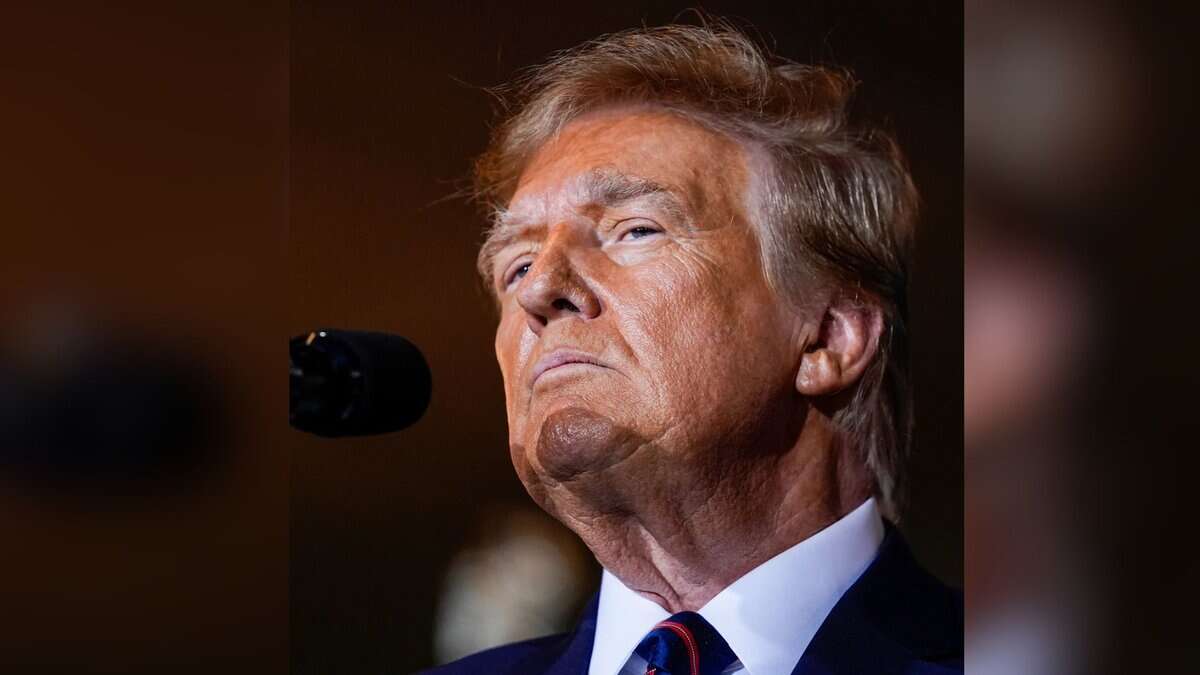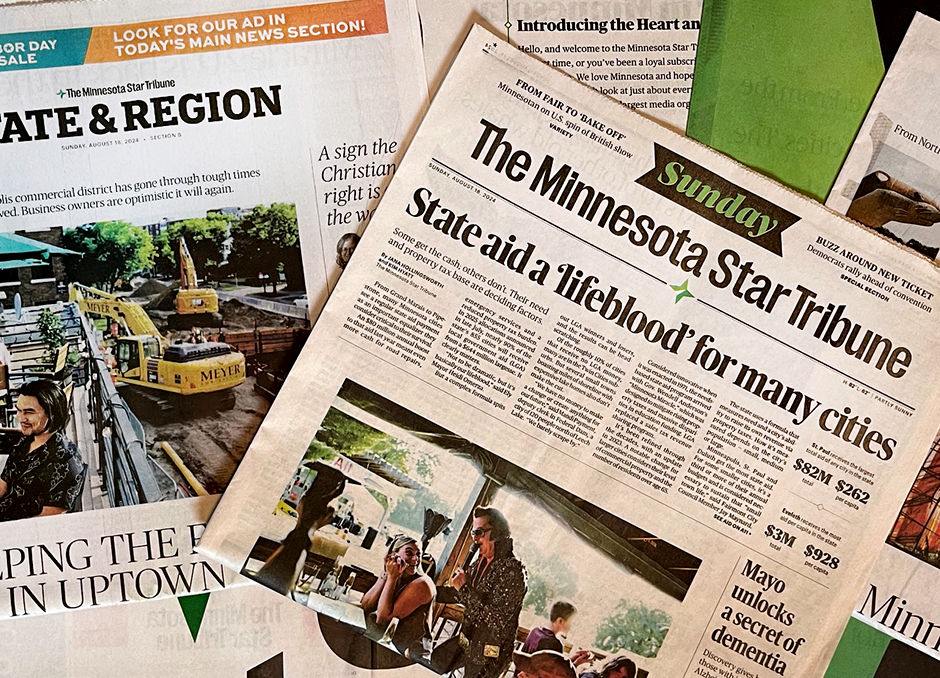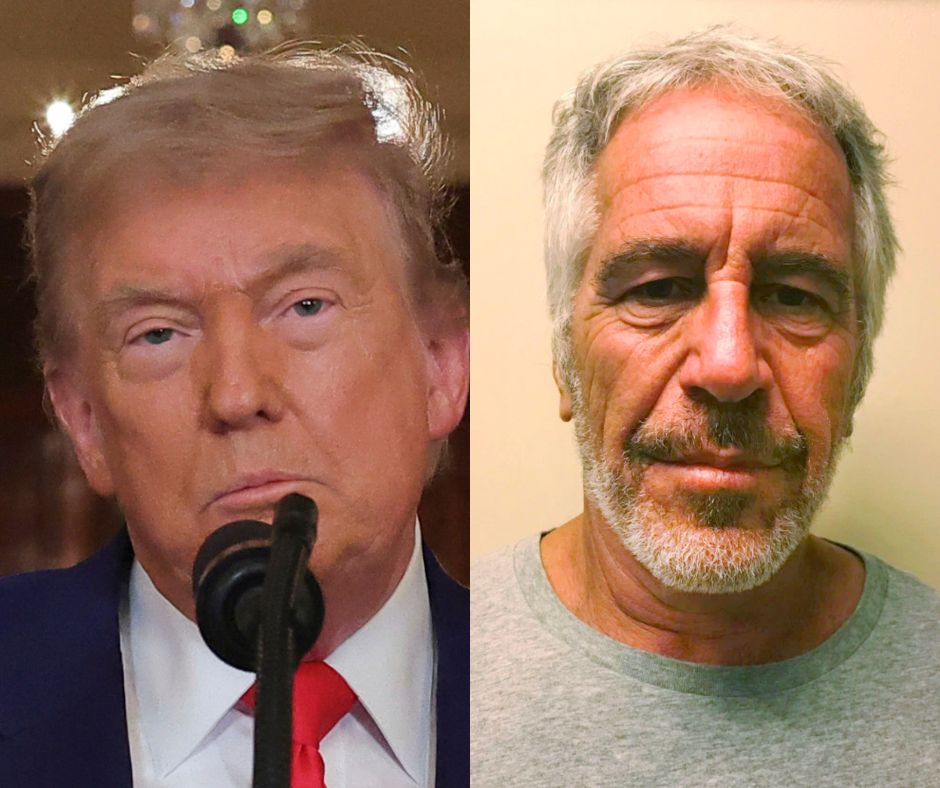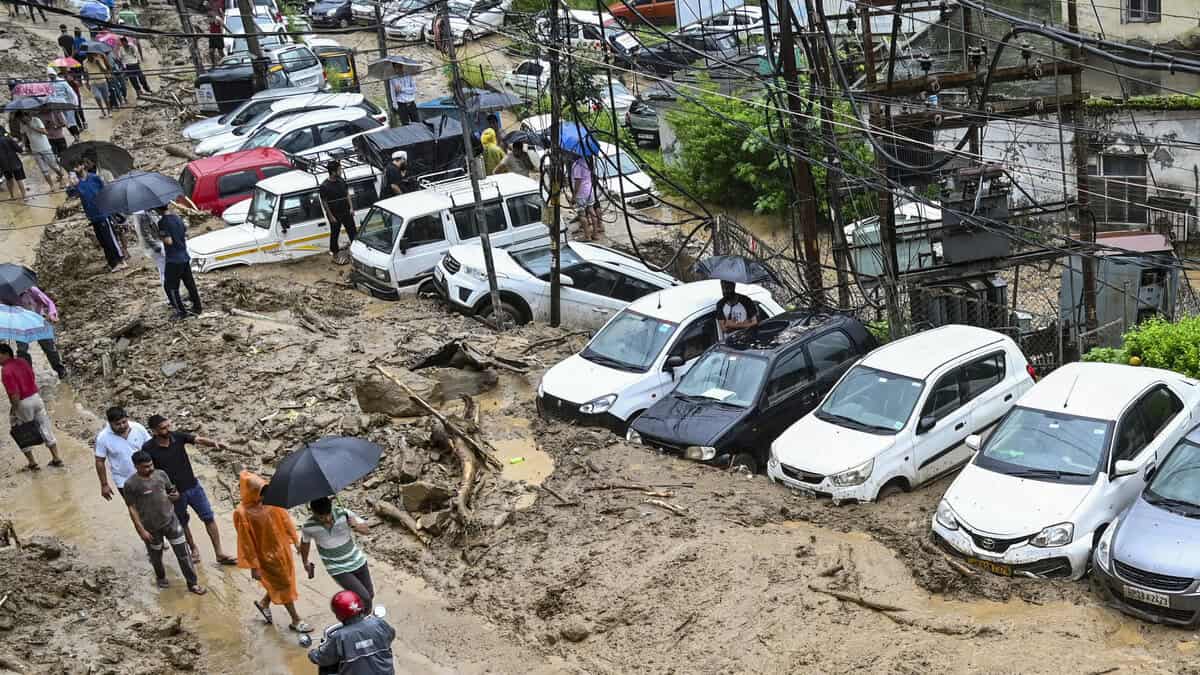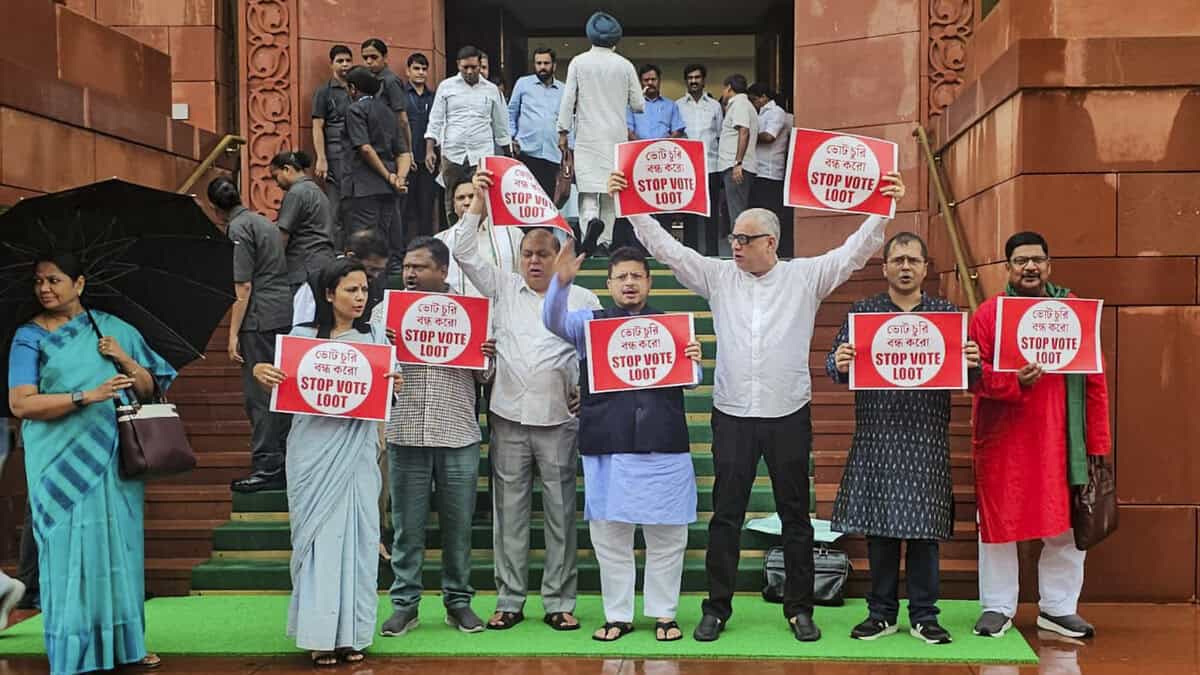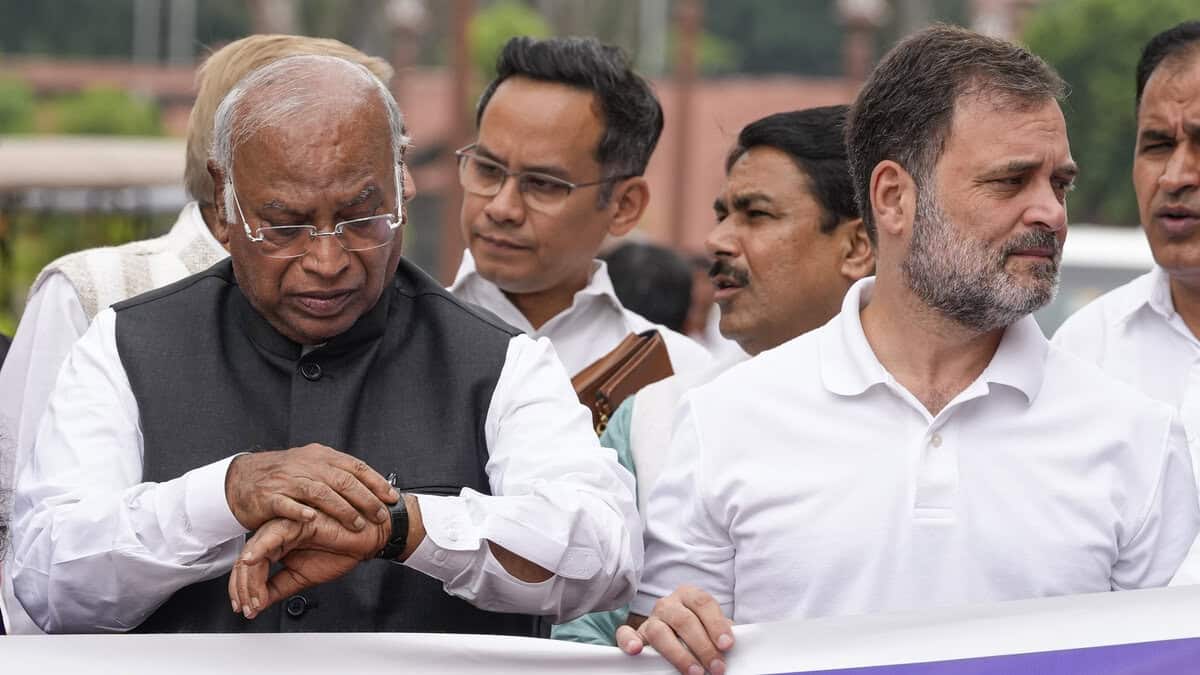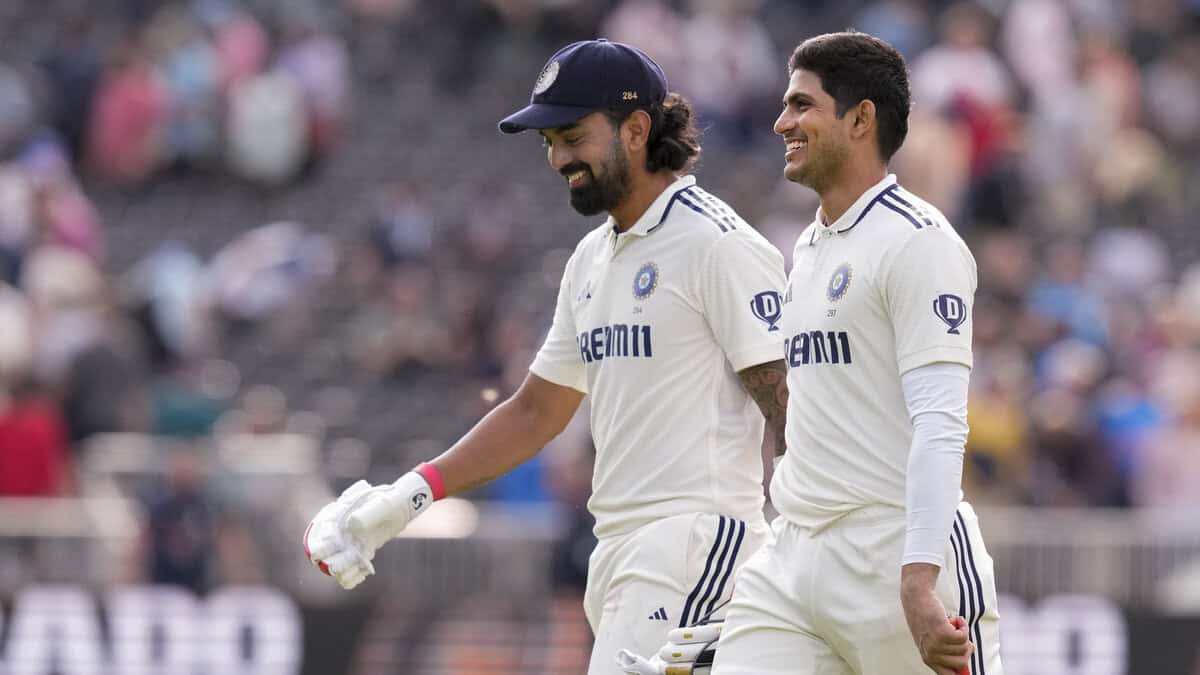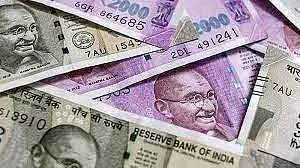

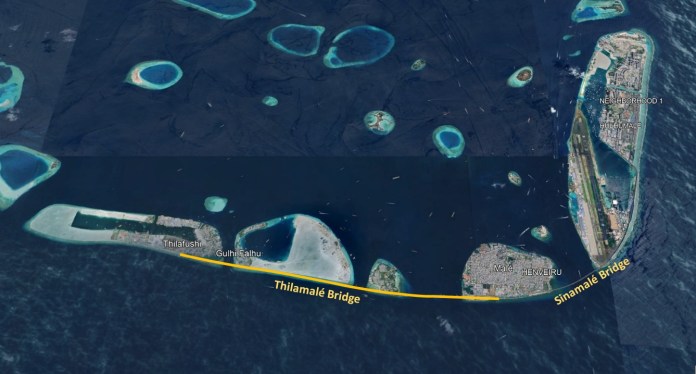
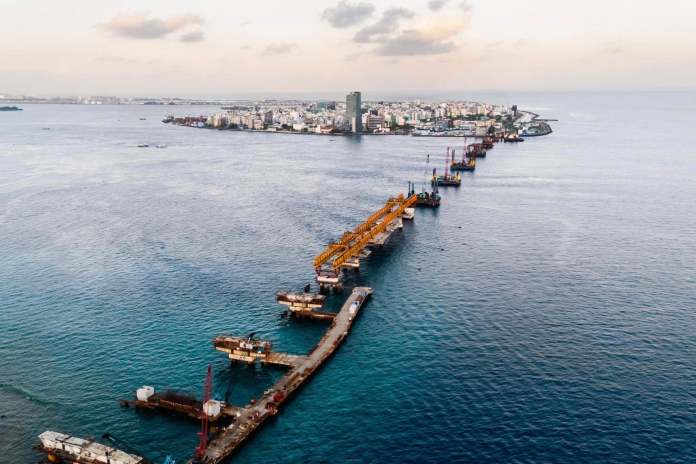

As Indian Prime Minister Narendra Modi lands in the Maldives for his first official visit since the diplomatic strain triggered by the 2024 tourism row, a powerful symbol of the deepening Indo-Maldivian ties is rising over the Indian Ocean—the Thilamalé Bridge. Officially named the Greater Malé Connectivity Project (GMCP), this 6.74-kilometre-long bridge will be the longest and most ambitious infrastructure project in the Maldives, built with extensive financial and technical assistance from India.
The bridge will connect four islands of the island nation, Malé, Villingili, Gulhifalhu, and Thilafushi, using bridge spans, viaducts and roads.
India’s Largest Infrastructure Gift to the Maldives
So far, over 60% work on the bridge have been completed, and is scheduled to be completed by September 2026. The piling work for the project has been completed, with a total of 263 piles have been successfully installed, both onshore and offshore. At present segment erection is underway, with each precast segment measuring 8.32 metres in height, 25.37 metres in width, and weighing 240 metric tonnes–among the tallest ever cast globally.
The bridge includes three navigation bridges of 140-meter main span across the deep channel between each island, 1.41 km of marine viaduct in deep water, 2.32 km marine viaduct in shallow water or on land, and 2.96 km of at-grade roads.
The bridge includes the world’s highest precast segment, which was installed in April this year. As per Indian High Commission in Maldives, the 8.23m tall and 25.37m wide segment weighs 216.04 MT and is an engineering marvel.
A Day of Special Achievement
— India in Maldives (@HCIMaldives) April 3, 2025
On 3 April, 2025, the tallest precast navigation span segment in the world under the
Greater Male Connectivity Project was erected by Afcons. The 8.23m tall and 25.37m wide segment weighs 216.04 MT and is an engineering marvel. pic.twitter.com/Zy6YI5L7E1
The Malé-Villingili-Gulhifalhu segment is expected to be completed by March 2026, while the Gulhifalhu-Thilafushi link will be completed by September 2026. As Male is already connected with Hulhulé and Hulhumale islands to the east through the China-funded 1.39 km long Sinamalé Bridge, six islands in the region will be connected with bridges.
The Thilamalé Bridge, once completed, will seamlessly connect capital Malé with of Villingili, Gulhifalhu, and Thilafushi, the four key islands in the Greater Malé region. A series of bridges, viaducts and approach roads will ensure seamless road communication among the four islands. These connections are vital for easing congestion in the capital, which has one of the highest population densities in the world, boosting economic activity, and enhancing mobility across the islands.

The bridge will greatly help in moving some population out of Male, where around 40% of the nation’s population live now. The upcoming bridge is vital for the upcoming port on Gulhifalhu island, and the industrial zone on the Thilafushi island. These projects will generate large number of jobs for the local youth.
It is expected that after population density in Malé comes down due to the bridge, the island will regain some of its forgotten pristine beauty.
Super low-cost funding from India
The project is the result of bilateral cooperation between India and the Maldives and was first proposed during the visit of India’s External Affairs Minister S Jaishankar to Malé in September 2019. The project is entirely funded by India, part grant and part low interest loan.
The Thilamalé Bridge project is being executed by Afcons Infrastructure, a leading Indian engineering firm, known for its expertise in marine and transport infrastructure. It is a part of the Shapoorji Pallonji Group. The total estimated cost of the bridge is around $500 million, approximately MVR 7.7 billion. The contract for the project was signed in August 2021.

The funding structure underscores India’s commitment to the Maldives’ development. It includes a $100 million grant from the Government of India, while the rest $400 million is in form of Line of Credit extended by India’s EXIM Bank. There is a grace period of five years on repayment, and the loan carries an interest rate of 1.75%. The loan is scheduled to be repaid in 20 years.
Mohamed Nasheed, the then president of Maldives, called it a “super low cost development assistance” from India, contrasting it with debt traps of China. He had tweeted, “The super low cost development assistance announced by @DrSJaishankar today is exactly what Maldives needs. Genuine help from a friend, to help us build critical infrastructure. Rather than eye-wateringly expensive commercial loans that leaves the nation mired in debt.”
The super low cost development assistance announced by @DrSJaishankar today is exactly what Maldives needs. Genuine help from a friend, to help us build critical infrastructure. Rather than eye-wateringly expensive commercial loans that leaves the nation mired in debt. @PMOIndia
— Mohamed Nasheed (@MohamedNasheed) August 13, 2020
This hybrid funding model ensures that while the Maldives benefits from significant Indian investment, it also maintains ownership of the project. India has also provided technical assistance, skilled workforce, and marine engineering expertise, ensuring the project adheres to international standards.
Contrast with China-funded projects
Not only the fund cost is low, the bridge is generating local employment and local business, unlike the China funded projects. Most Chinese projects overseas are executed by Chinese workers with little involvement of local workers, and they transport all the material from China. In contrast, the Thilamalé Bridge project is using local workers extensively, and using locally available material.
Moreover, India’s funding for the bridge is transparent and already announced, grant and loan in 1:4 ratio. The interest rate and repayment term are well defined. This is in contrast to Chinese development projects, where financial details remain buried in secrecy. In case of most Chinese loans, the cost and the repayment term are not made public.
A Bridge Beyond Steel – Symbol of Regional Trust
The Thilamalé Bridge is not just a feat of engineering, but a strategic link that cements India’s role as a reliable partner in the Maldives’ development journey. It contrasts starkly with some infrastructure projects elsewhere in the region that have led to debt dependency or sovereignty concerns. India’s approach emphasizes transparency, sustainability, and local empowerment.
Besides the Thilamalé Bridge, India has been actively involved in building roads, ports, water and sanitation projects, and housing developments across the Maldives through multiple High Impact Community Development Projects (HICDPs).
Prime Minister Modi’s visit signals a recalibration of ties after a period of political turbulence under President Mohamed Muizzu, who initially leaned towards China. However, recent months have seen a clear shift, with Muizzu seeking to balance relations and revive traditional cooperation with India.
In this context, the Thilamalé Bridge stands as a sign of enduring friendship between the neighbours and a manifestation of India’s “Neighbourhood First” policy. As the bridge steadily takes shape over the turquoise waters of the Maldives, it serves as both an engineering marvel and a diplomatic milestone, reminding the region that India’s rise is rooted in partnership, not patronage.






